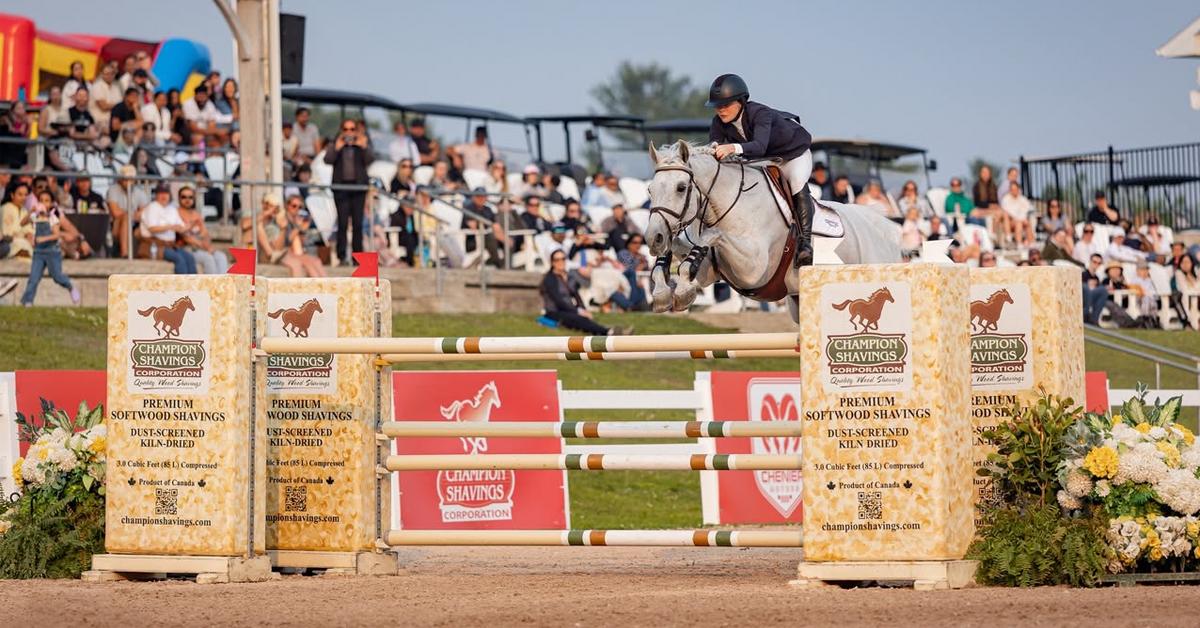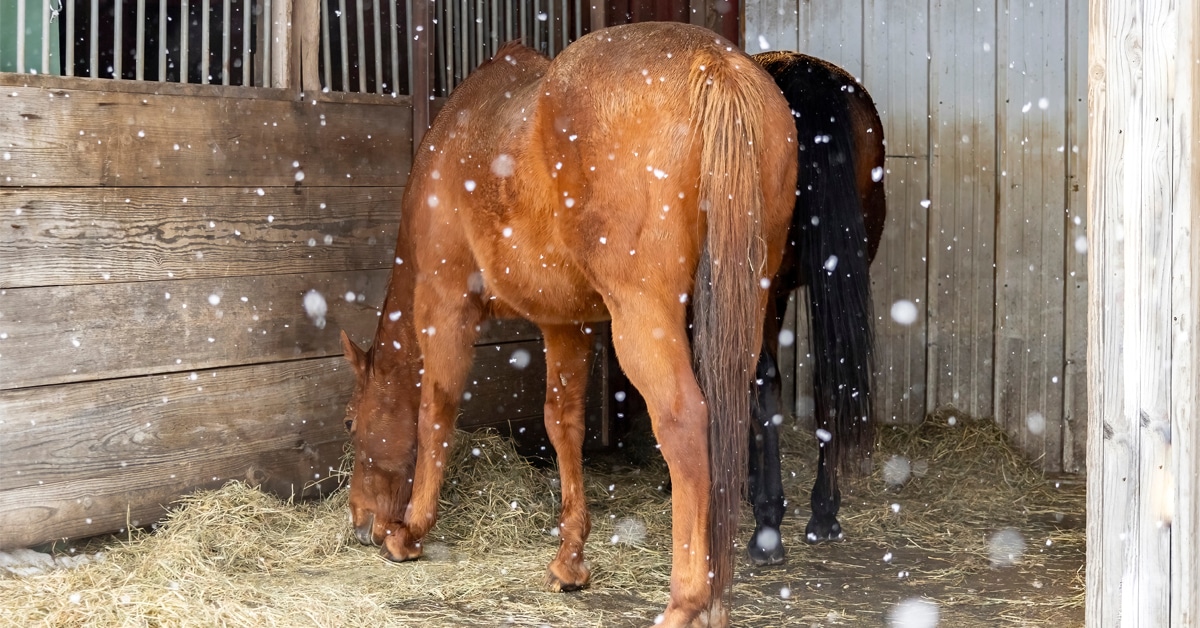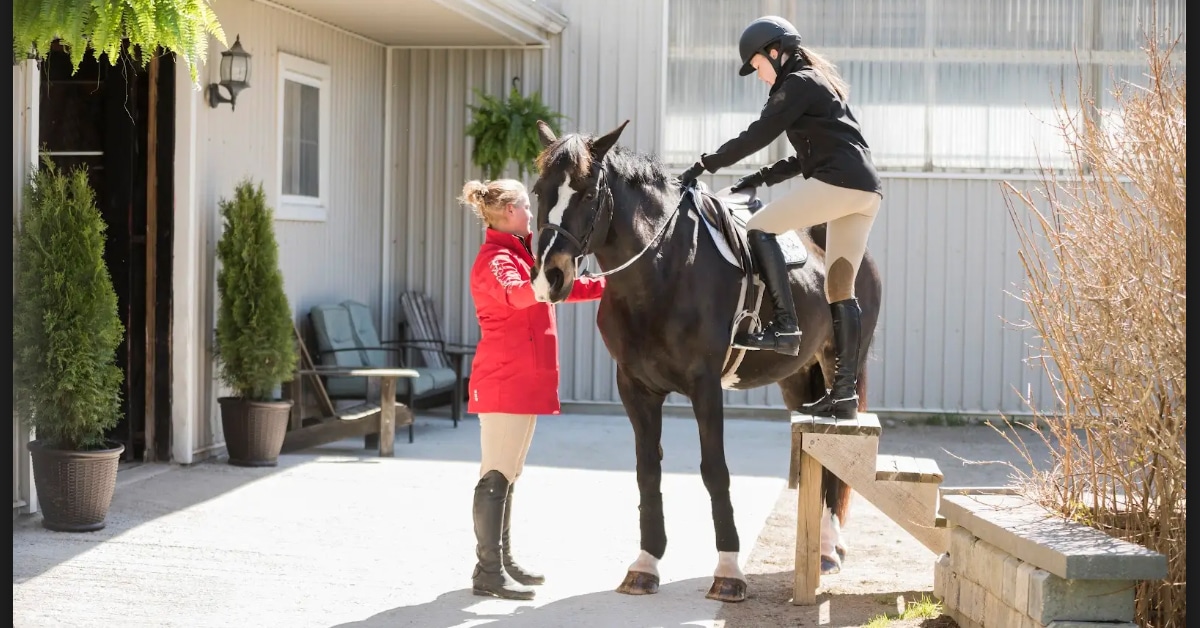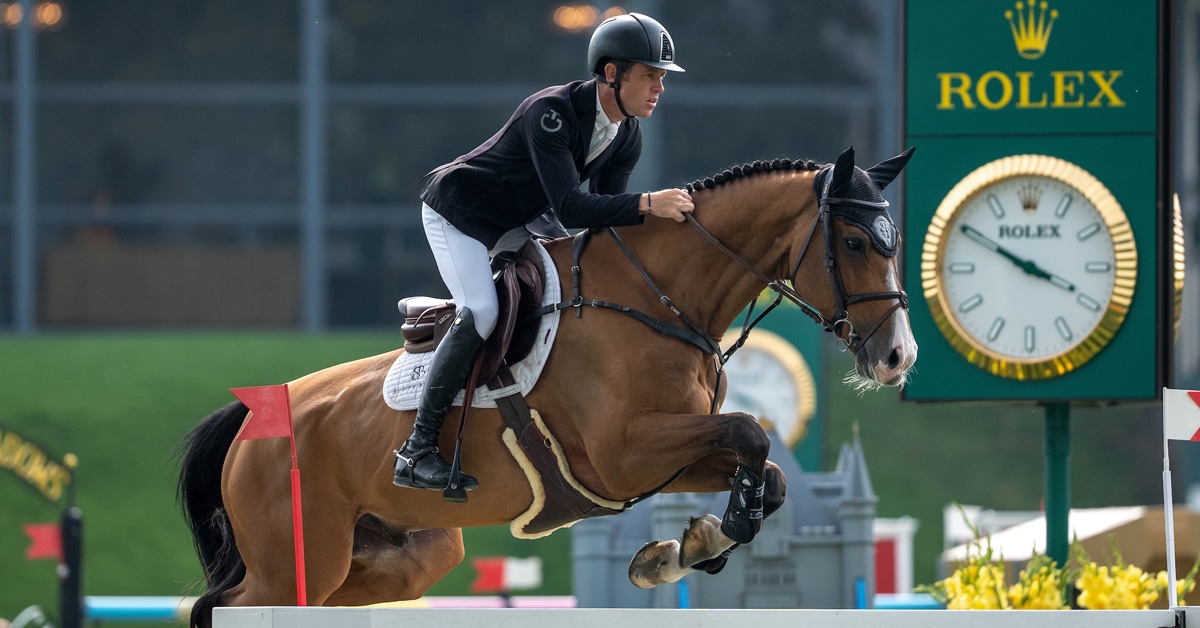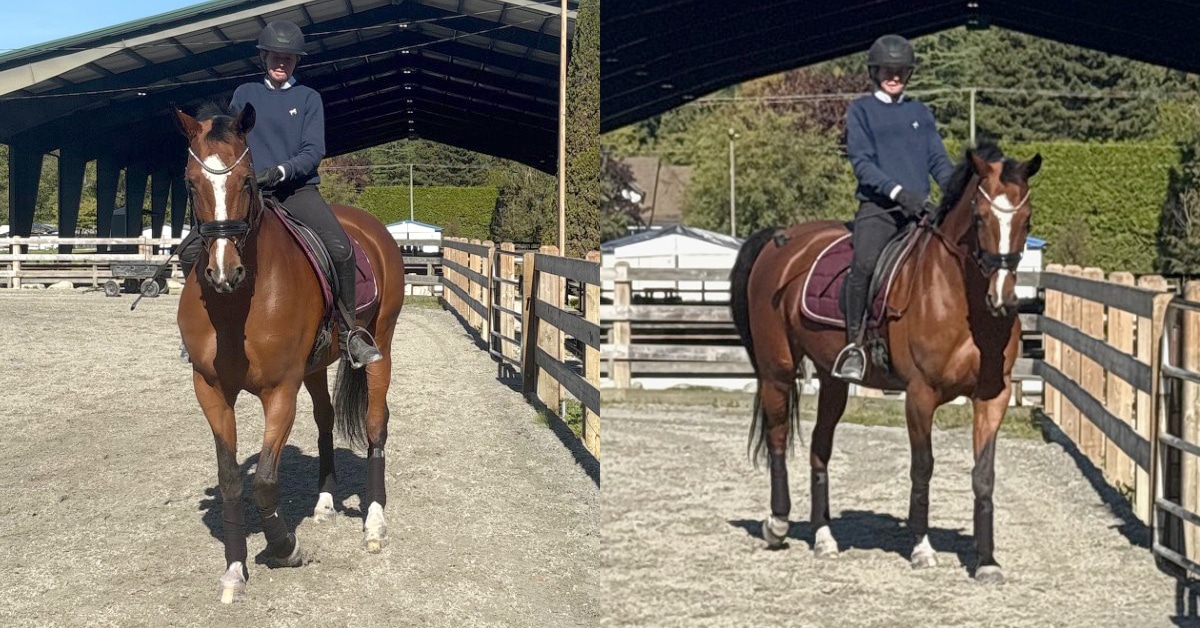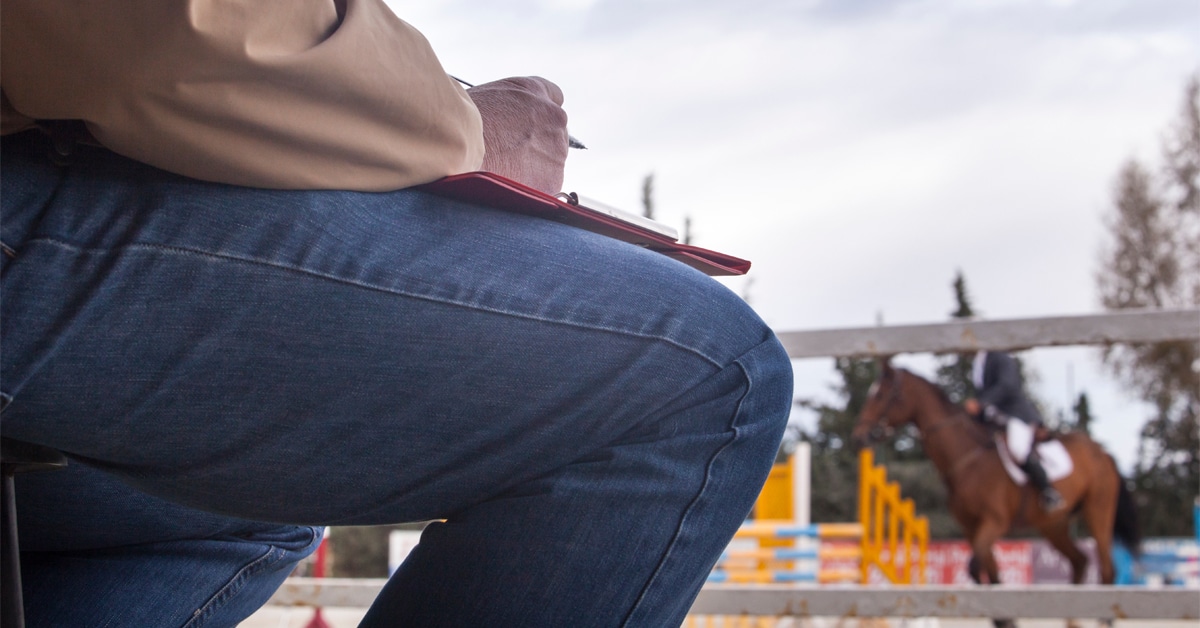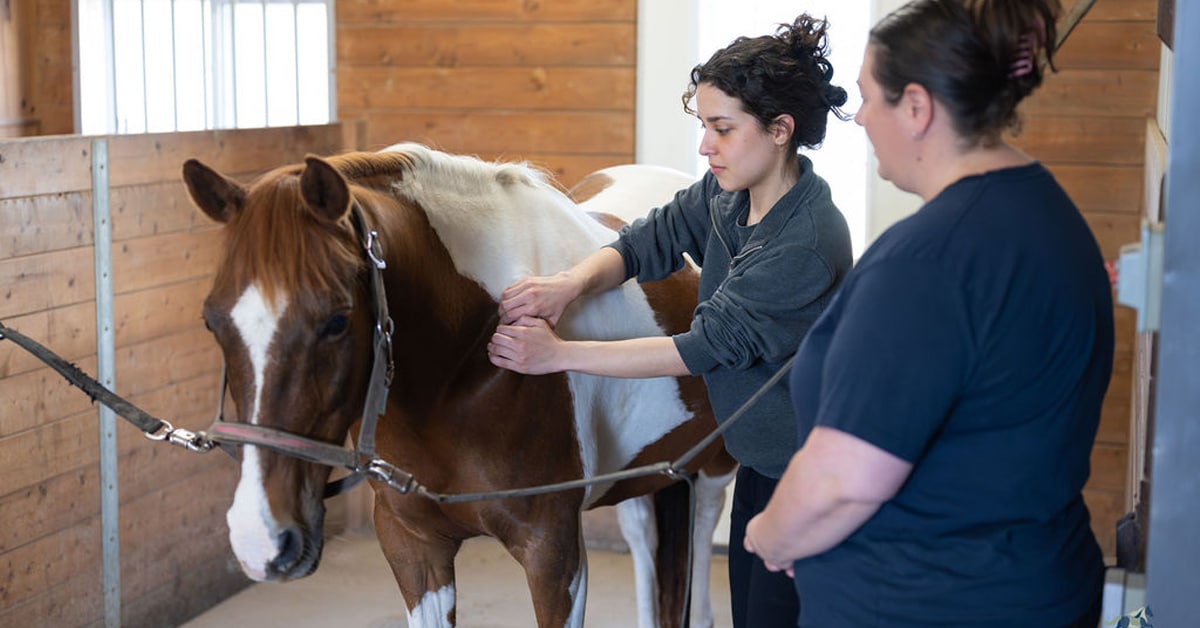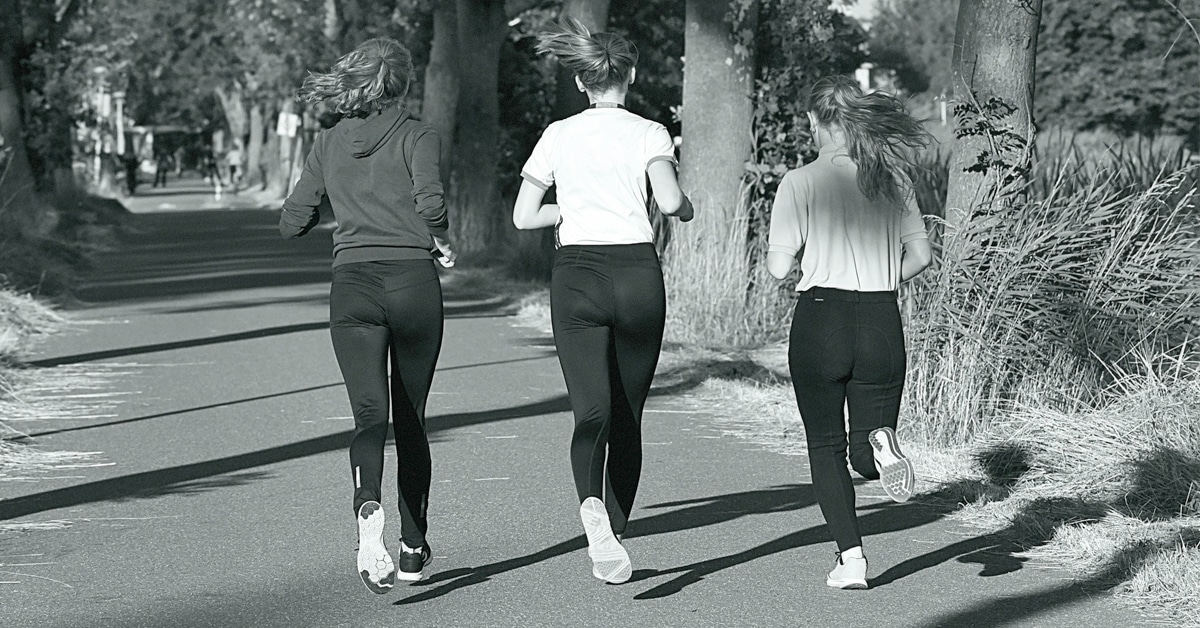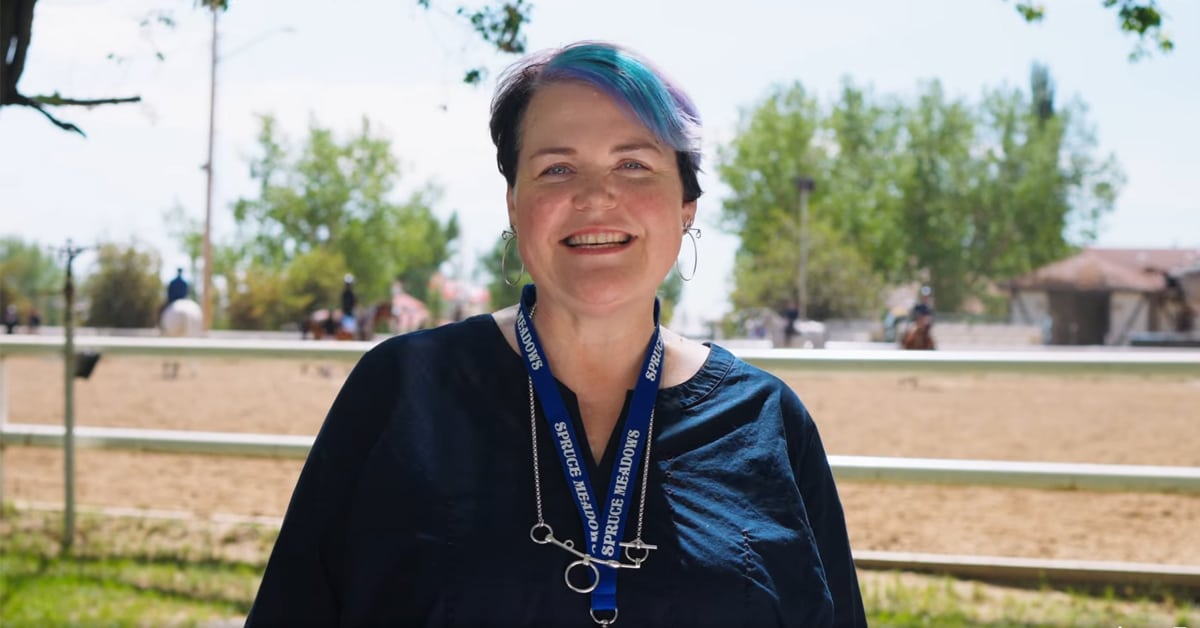Lisa Osachoff of Calgary has been an Equine Canada senior hunter/jumper judge since 2007 and is an FEI Level 3 jumper judge. She was a competitive junior athlete and worked as a grand prix-level groom, and has judged at venues such as Spruce Meadows and Thunderbird Show Park. She also is an executive leader in the insurance industry.
HorseSport.com talked to her about what she likes to see in hunter and equitation rounds.
What do you look for when a horse first enters the ring?
I like to see a horse obviously in good health, not overweight or underweight, with a blooming coat and a lovely expression. Are they coming in and looking to do their job in a friendly way? It depends on the division. In a children’s division, you want a horse coming in and looking to get down to the job with a kind eye and forward ear. If it’s a young horse, it’s okay if they peek around a bit.
I want to see a well-turned out horse. In a bigger division shows, is the tail braided? In an unrated show, if it is without braids, is the mane at least on right side and is it all going in one direction? If it doesn’t have braids, I am not so fussed about it if it’s a no-braid day, but I still want the mane laying flat.
Have its feet been cared for? If it’s going straight and tripping, it may not have been shod in the right period of time.
What are the most common errors you see in the hunter ring?
The biggest error is when people come in the ring and amble around, and don’t start as soon as they enter. The judging starts when you walk in the ring, not when you do a full circle. Come in with your reins collected, don’t wander in on a loose rein. Come in at a working walk, pick up a trot or canter. Don’t worry if I’m ready, you do you.
When you score a class out of 100, how much do certain errors cost you?
It’s an accumulation of things. If you chip two jumps and miss a lead, you’re in the 60s. If you cross-canter a bunch, that’s going to put you in the 60s. If you hit all the jumps with good distances and get your lead, it will be between 70 and 80, depending on the overall quality of the job.
If you break stride, it will be in the 50s. If a horse is fresh, it depends on the division; a buck is a buck and will put you in the 50s. It depends on whether it’s a young horse class or a pro class. There’s a difference between a horse playing and a sour moment. If it’s true play, I don’t penalize too harshly, but it gets noted. In hunter, everything gets noticed and it’s the differentiation between horses.
You want an amazing expression, knees, face and ears to put you in the 70s and 80s. To score well, can you get all the distances, lead changes and strides? That’s good, but to differentiate you want a horse that has an amazing jump and expression, is nicely turned out and has amazing movement.
How do you break a tie?
It’s somewhat subjective, but if two horses have put in a good trip, got all the distances and leads, the differentiation is the quality of horse. There is going to be one horse that is higher quality than the other, and more athletic. Of all of the judges I’ve sat with and learned from many years ago, they tell you to think about the horse you would want to ride.
How can you best ride a hunter under saddle class?
You certainly want to show your horse off the best you can. That doesn’t mean cutting someone off to get in front of judge. One of my pet peeves is a rider actively watching what I’m doing versus what they are doing. Don’t worry about me ‒ I’m watching! Ride your ride, space yourself out, show off on the long sides, but don’t forget the short sides. Don’t back off on the short sides. If something happens and the horse breaks stride, keep calm, fix the mistake and carry on. It’s just a class.
Another pet peeve of mine is trainers over-coaching from the side. There is no rule about it, but I question how effective that is. The best horses and riders don’t have someone clucking and yelling from the sidelines. The coaches should have done their homework and prepared their riders before they’re in the ring.
What is your advice for equitation and medal trips?
There’s a myth about equitation trips that you should sit trot when you come in ring. Don’t do it, if it’s not the best way to prepare your horse. I see so much sit trot with not enough impulsion. Do posting if it’s best for your horse and you.
In equitation, it’s all about riding the horse effectively through the correctness of the position of rider. One mistakes riders make is they focus too much on sitting pretty versus an effective ride that’s going to bring whole package together. If you ride effectively, and you’ve gotten a little too deep in the seat but didn’t chip, you are going to win out over someone that looked pretty and chipped a fence.
What is one thing that you wish trainers paid more attention to when setting up a horse/rider combination for the show ring?
To prepare riders well. I see this a lot at smaller shows where the riders aren’t properly prepared. As a trainer, are you aware of the specs of the class to help the rider? I don’t know how many shows I have been to across the prairies where in flat classes they have riders in hunt seat when they should be sitting. That’s basic knowledge. Trainers should understand the specs, know what’s going to be judged, and have riders prepared for that.
Trainers also need to prepare kids for what’s going well and be prepared if it doesn’t, such as what happens if the horse stops twice, when you can ask for a courtesy fence, or if you can use the whip after elimination.
Do all judges judge the same?
I do think there’s a perception that hunter judging is a real mystery. We all take the same education to get our cards and do the same maintenance to keep our cards. It is a standard we oversee. I’d be surprised if my 40 or 50 score is wildly different than another judge’s.
There may be a slight difference in how I view the most athletic horse. Across the board, judges typically have the same top three, but may be in a different order, and they usually have a similar top six.
Things can look different when you see the class from the other side of the ring, not from the from judge’s booth. The vantage point that the judge has is one point of view, and you may see something in a slightly different way.
The Latest
